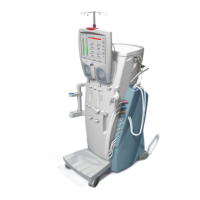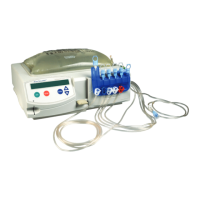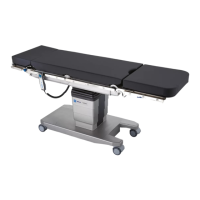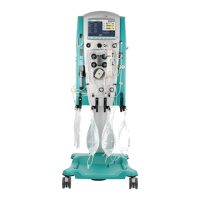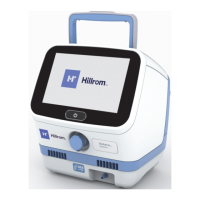©2020 Baxter International Inc. C- 5
NIBP Module
Neonates measurements must always use a 3 meters patient hose in order to avoid
overpressure errors caused by a lack of air volume within the overall pneumatic system.
A compressed or kinked connection hose may cause continuous cuff pressure resulting
in blood flow interference and potentially harmful injury to the patient.
Too frequent BP measurements can cause injury to the patient due to blood flow
interference.
Adverse Reactions
Allergic exanthema (symptomatic eruption) in the area of the cuff may result, including the
formation of urticaria (allergic reaction including raised edematous patches of skin or mucous
membranes and intense itching) caused by the fabric material of the cuff.
Petechia (a minute reddish or purplish spot containing blood that appears on the skin surface)
formation or Rumple-Leede phenomenon (multiple petechia) on the forearm following the
application of the cuff, which may lead to Idiopathic thrombocytopenia (spontaneous
persistent decrease in the number of platelets associated with hemorrhagic conditions) or
phlebitis (inflammation of a vein) may be observed.
NIBP Cuff Selection and Placement
It is important to select the cuff size that is appropriate to the diameter of the patient's upper
arm. Use the Range Lines on the inside of the cuff to determine the correct size cuff to use.
Wrap the cuff around the arm making sure that the Artery Marker is aligned over the brachial artery
(as shown in Figure C-1). If possible, do not wrap the cuff over the patient's clothing. The cuff should
fit snug to the patient's arm for maximum oscillometric signal quality. An appropriate-sized cuff
should be placed on the non-dominate arm where the lower edge of the cuff is located 2cm above
the antecubital fossa (interior bend of the elbow).
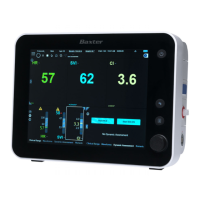
